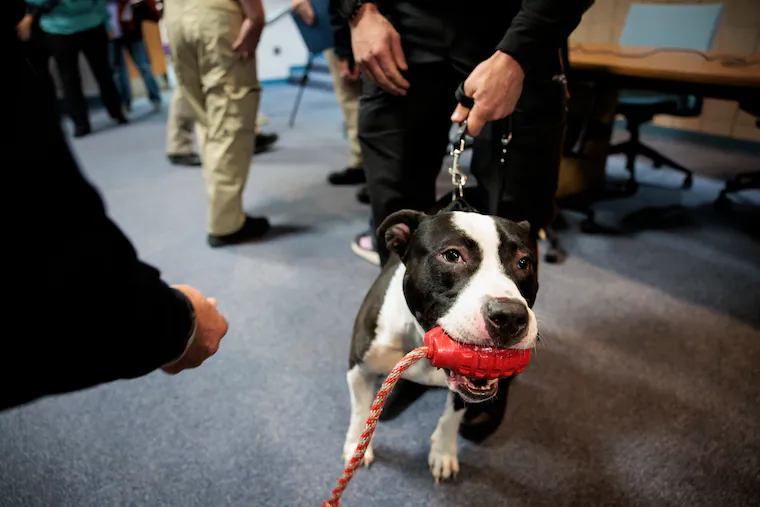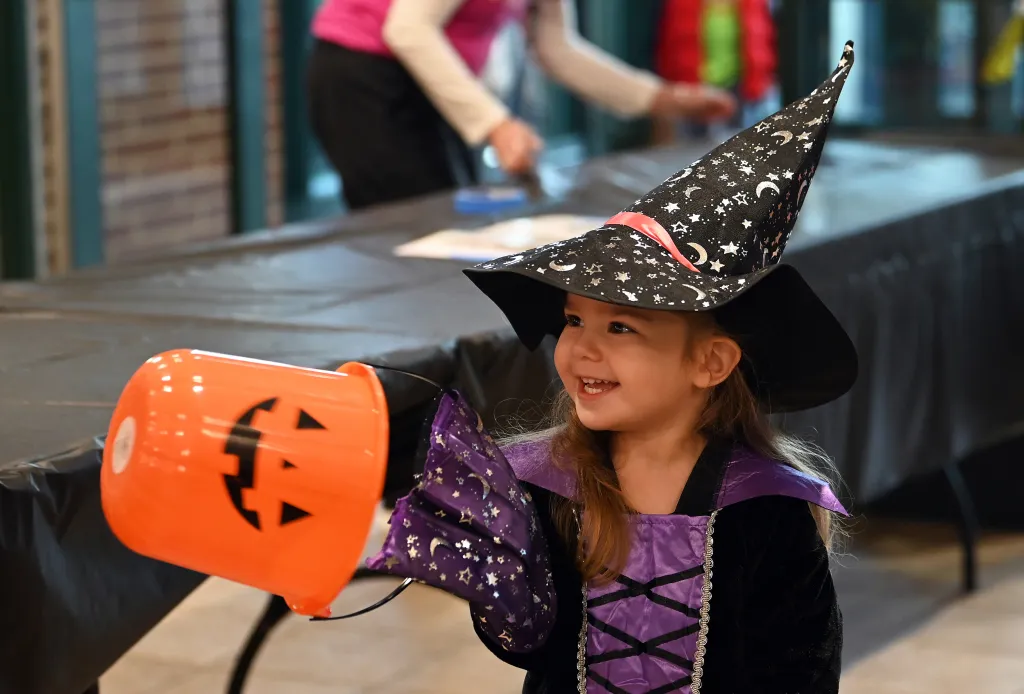Copyright The Philadelphia Inquirer

Delran Township’s municipal building was unusually packed for a weeknight meeting. But residents and their children came for a chance to see a dog who is in a highly unusual position for his breed. K-9 Ron, a 3-year-old pit bull, was officially sworn in Tuesday as a detection dog for the Delran Township Police Department. Ron, predominantly black-haired with a streak of white down the center of his face and across his chest, was found abandoned in an apartment in Minneapolis with two other dogs in 2023. A shelter gave the trio Harry Potter themed names — Ron, Harry and Hermione. The chaotic environment at the shelter proved to be stressful and miserable for Ron, and it scheduled him for euthanasia. But when staff took him out of the shelter for brief trips, his demeanor completely changed. They noticed his persistence and love for toy hunting, and believed Ron would thrive outside of the shelter, with a job to do. They introduced him to Unbreakabull, a Twin Cities pit bull rescue nonprofit. Sara Romdenne, Unbreakabull’s executive director, said her organization gets many rescue requests that it ultimately doesn’t have the resources to take on. But after she met Ron, it was immediately clear that she couldn’t let him die. The organization took Ron in the day before his scheduled euthanasia date. Even though Romdenne said she had never heard of a pit bull doing police work before, Unbreakabull noted his toy drive, too. The organization and the shelter sought out K-9 Protectors, a nonprofit that trains rescue dogs for police work and donates them to departments. After watching videos of Ron, K-9 Protectors staff were impressed. They’d never trained a pit bull for police work either, but he seemed like an ideal fit. “Ron was just off the charts amazing in all categories,” said Christie Marrano, a dog trainer for K-9 Protectors, who began working with him last year. Police departments traditionally purchase breeds like German shepherds and Belgian malinois for police work, often from specialized breeders that charge several thousand dollars. U.S. police began using K-9 units during the Civil Rights Movement in the 1950s and 1960s, when images of German shepherds attacking Black protestors spread widely. Since then, researchers have raised concerns about the accuracy of police detection dogs who are trained to sniff out and find drugs, explosives and other substances, but may be influenced by their handlers. The U.S. Supreme Court addressed the issue in 2013, after petitioners argued that a dog’s false alert could give improper pretext for police stops. The court ruled unanimously that a properly trained dog’s alert was reliable enough evidence to provide probable cause for a search. Marrano said many breeds are capable of doing the job with the right training. She said that the most important characteristic is their drive and desire for finding objects. “Everything else is just aesthetic,” she said. “To these dogs, it’s work, but it’s also like the best game ever.” Looks aside, Ron does not have the aggression often associated with a police dog, either. “He’s a goofball. He’s a sweet natured, really stable, social dog... he’s an ambassador to the breed,” Marrano said. Despite his detection ability, it took Ron longer than most to find a placement because of his breed. For a year and a half, K-9 Protectors promoted him online and took him to police seminars for extra training, but nobody was seriously interested. Finally, they connected with Delran, which had been discussing reactivating its K-9 unit, and donated him in September. Ron and his handler, Patrolman Tyler Malia, recently graduated from the Middlesex County Sheriff’s Office Canine Training Academy. While some police dogs are used for both detection and attack work, Ron was trained as a “single purpose” dog and will only perform detection. The Delran Police Department did not immediately respond to requests for comment. It has already begun to use Ron in the field, leading to drug possession related arrests in two cases. Ron may be used to assist other police departments in Burlington County. At the close of his swearing in, Ron gave an inked paw print to sign his oath of office paperwork. With his long tail wagging, Ron stayed for a brief photo op with attendees, before turning in for the night. He had the next day off.



